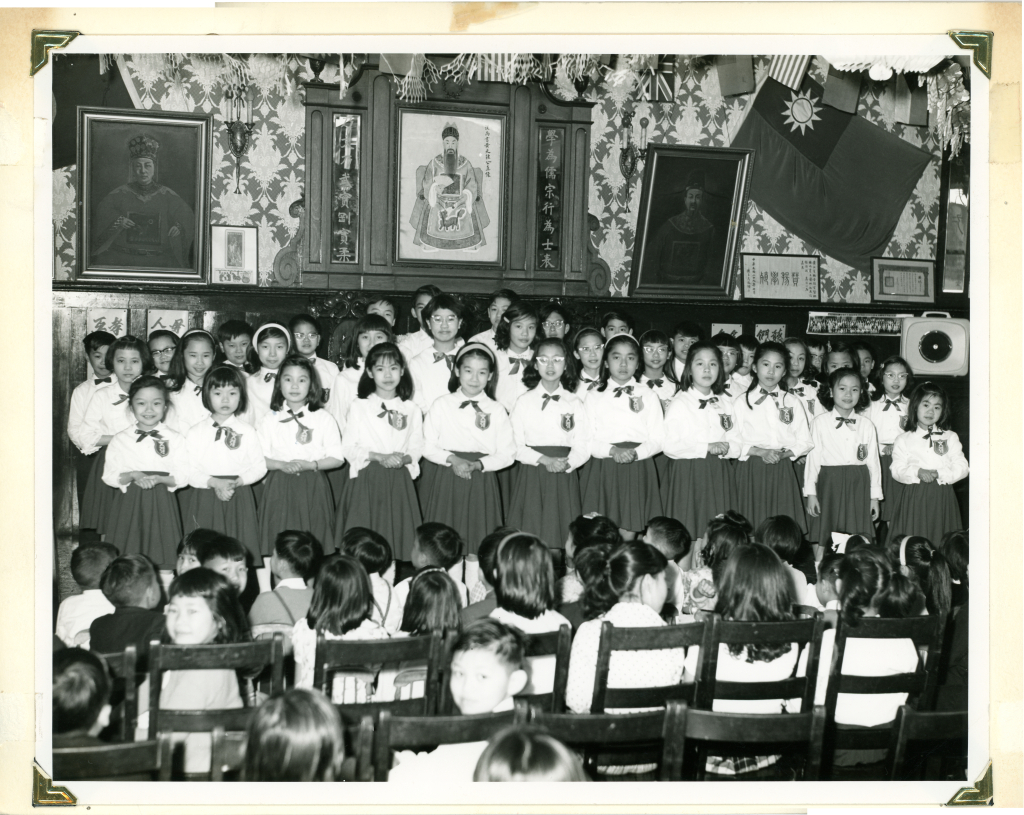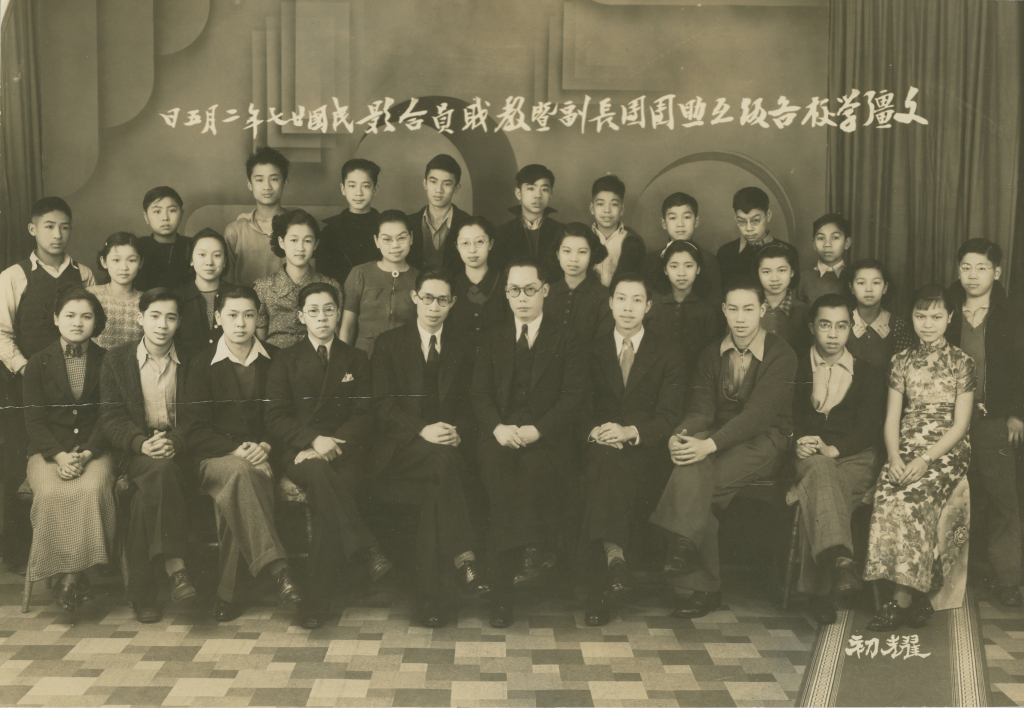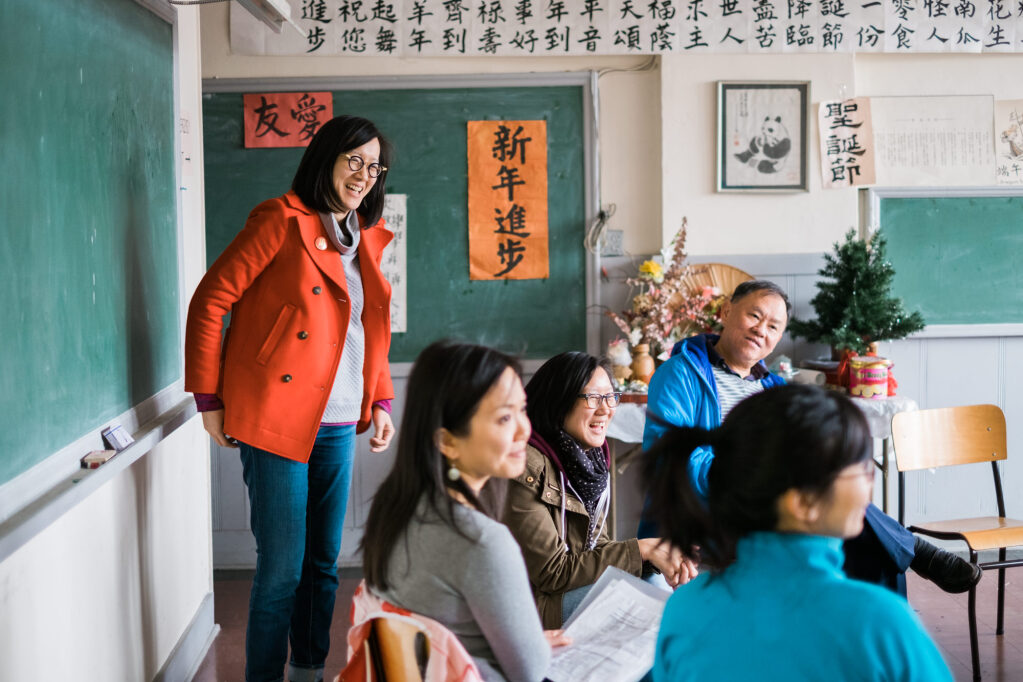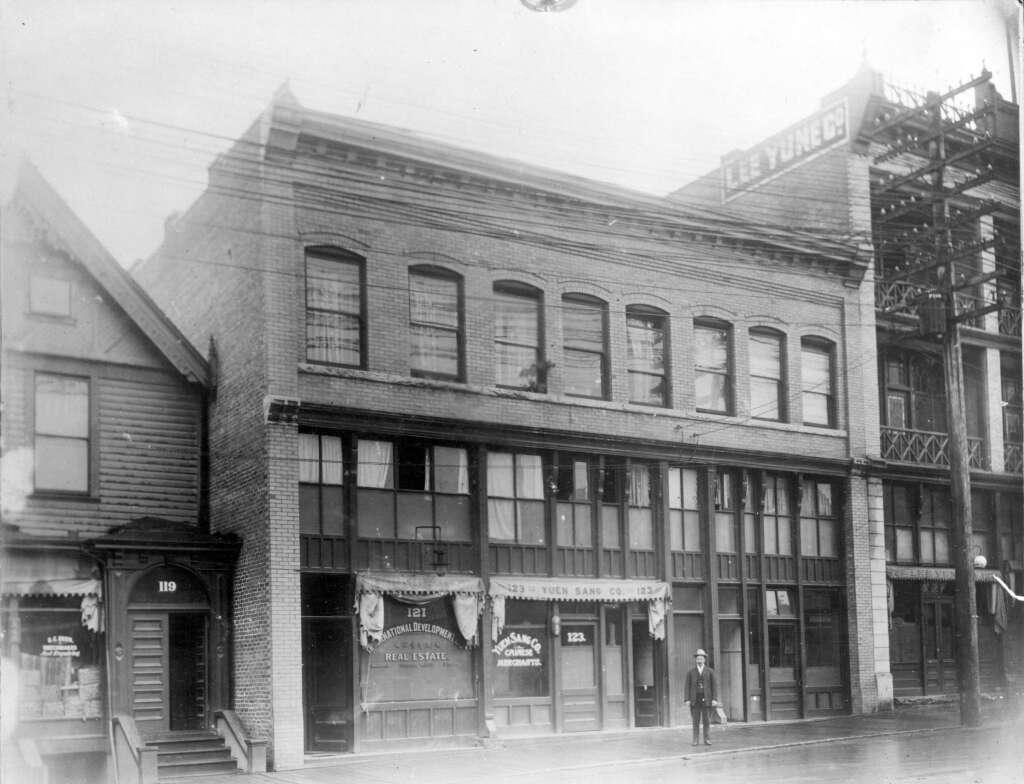The Mon Keang School, operated by the Wongs’ Benevolent Association since 1925, has been entered in as a finalist in the National Trust for Canada’s Next Great Save contest! The historic place with the most votes will win $50,000 to help adapt, renew, or improve their space – Mon Keang is Vancouver’s only representative in the contest, and their century-old building is in dire need of these funds for repairs to ensure that it can survive for generations to come. Each person can vote once per day from April 18-May 6, so help do your part in saving this important part of Vancouver Chinatown’s heritage.
Vote Here Once Per Day!
About Mon Keang School
Founded in 1925 by the Wongs’ Benevolent Association, Mon Keang School occupies the third floor at 123A E Pender. For over 80 years, Mon Keang offered Canadian-born Chinese children the opportunity to learn to read, write, and speak Chinese. The school also offered cultural education for these 土生 (tou2 saang1 | tǔshēng) Chinese-Canadian children, including Chinese poems, plays, opera, and other performances.[1]

Mon Keang students performing on the fourth floor of the Wongs’ Benevolent Association Building. Photo Credit: Unknown. Image Source: Wongs’ Benevolent Association; Mon Keang School Archives.
Students of all last names were welcome, despite the fact that the school was founded by and housed in the building of the Wongs’ Benevolent Association (a clan association for those sharing the surname 黃 (wong4 | huáng)).[2]

Mon Keang faculty, club leaders, and volunteers photographed by Yucho Chow in 1938. Photo Credit: Yucho Chow. Image Source: Wongs’ Benevolent Association; Mon Keang School Archives.
Mon Keang offered only elementary classes until World War 2, after which they became the first Chinese School in Vancouver to offer secondary classes. Since much of Vancouver’s Chinese population hailed from 四邑 (sei4 yap1 | sìyì), the classes were often taught in a mix of the dialects spoken in that region 四邑話 (sei4 yap1 waa6 | sìyìhuà) and standard cantonese 白話 (baak6waa6 | báihuà), something Wong Koon Fow, a former principal of the school, called Wah Kew Wah 華僑話 (waa4 kiu4 waa6 | huáqiáohuà) or the language of the overseas Chinese.[3]

June Chow of the Youth Collaborative for Chinatown with Saturday School students at Mon Keang School on February 18, 2017. Photo Credit; Jonathan Desmond.
While declining enrolment meant that Mon Keang shut its doors in 2011, the Youth Collaborative for Chinatown (YCC) partnered with the school to reopen for “Saturday School” language classes. In the new program, which ran until the pandemic, Dr. Zoe Wai-Man Lam 林慧雯 taught adult learners beginner-level or “survival” Cantonese over eight-week terms. Lessons in the classrooms were supplemented by field trips, with place-based learning out on the streets and in the stores of Chinatown. The third episode of the Telus StoryHive series, “In Chinatown” featured the Mon Keang/YCC Saturday School in 2018.[4]
About the Wongs’ Benevolent Association Building
The Wongs’ Benevolent Association Building was built around 1910 but its current form dates to 1921, when the Wong Kong Har Tong (one of the predecessors to the modern Wongs’ Benevolent Association) renovated it as their new headquarters. Architects G.L. Southwell and J.A. Radford were brought on to add another storey as well as recessed balconies and ornamentation.[5]

Photo of Mr. Francis J. Hamilton outside 121-125 East Pender Street in 1913. Photo Credit: J. S. Matthews. Image Source: Vancouver Archives AM54-S4-: Bu P717
In addition to Mon Keang School (founded in the building 1925), the building has been home to the Wongs’ Benevolent Association (formed from the merger of the Wong Kong Har Tong and the Wong Wun Sun Society in 1970), the Hai Fung Club (a recreational club formed in 1956 that appealed particularly to immigrant youth through to the 1970s), and ground-floor businesses. The ground floor of the building is currently occupied by legacy businesses Ochi Chinese Fashion (selling traditional Chinese clothing) and Good Luck Entertainment Centre (selling DVDs and other home entertainment). In between the two lies the entrance to the Wongs’ Benevolent Association and the Mon Keang School, under a vibrant stained-glass window.[6]
Why You Should Vote
With gentrification and development pressures making it harder than ever for societies like the Wongs’ Benevolent Association to maintain these century-old buildings, the Next Great Save provides a unique opportunity to ensure that the heritage of our community, both tangible and intangible, receives the support it needs to continue for generations to come.
Mon Keang’s home in the Wong’s benevolent Association building retains a strong heritage frontage emblematic of Chinatown’s built heritage, and serves to ensure the transmission of our community’s intangible heritage, through language, ceremony, and intergenerational connections. However, the building is in need of urgent repairs, including to the plumbing system, bathrooms, floors, and recessed balcony, the latter of which is a key feature of Chinatown’s architectural character. If Mon Keang wins the Next Great Save, they would be able to undertake these necessary repairs and ensure that this century-old building can survive for generations to come. In addition, the prize money would allow Mon Keang to restore heritage features within the school, replace 1960s fluorescent lights with period fixtures, and replace and restore decorative features such as tiles and other fixtures around the building. With these repairs and restorations, Mon Keang School will be better equipped to invite the community back in and create active spaces of cultural transmission in Chinatown.[7]
Did you or your relatives go to Mon Keang? Share a story with us and we’ll publish it on our website!
Sources
[1] Wongs’ Benevolent Association; Paul Yee, Saltwater City: An Illustrated History of the Chinese in Vancouver (Vancouver: Douglas & McIntyre Ltd, 2006) at 89.
[2] Wongs’ Benevolent Association; Mon Keang School Archives.
[3] Paul Yee, Saltwater City: An Illustrated History of the Chinese in Vancouver (Vancouver: Douglas & McIntyre Ltd, 2006) at 89.
[4] “Saturday School” (last accessed April 18, 2024), online: Youth Collaborative for Chinatown <https://ycc-yvr.com/saturday-school/>.
[5] Wongs’ Benevolent Association; “Chinese School” (last accessed April 18, 2024), online: Canada’s Historic Places <https://www.historicplaces.ca/en/rep-reg/place-lieu.aspx?id=7794>; “Chinatown Architectural Walk” (last accessed April 18, 2024), online: City of Vancouver <https://vancouver.ca/parks-recreation-culture/chinatown-architectural-walk.aspx>; “Historic Chinatown: Vancouver’s Chinatown Map Guide” (2018), online (pdf): Vancouver Heritage Foundation <https://www.vancouverheritagefoundation.org/wp-content/uploads/2020/12/VHF-Chinatown-Map-Guide-FINAL-web-res.pdf>.
[6] Wongs’ Benevolent Association; Wing Chung Ng, The Chinese in Vancouver, 1945-80: The Pursuit of Identity and Power (Vancouver: UBC Press, 2000); Karin Vivian Straaton, The Political System of the Vancouver Chinese Community: Associations and Leadership in the Early 1960’s (MA Thesis, UBC, 1974).
[7] Mon Keang School.






